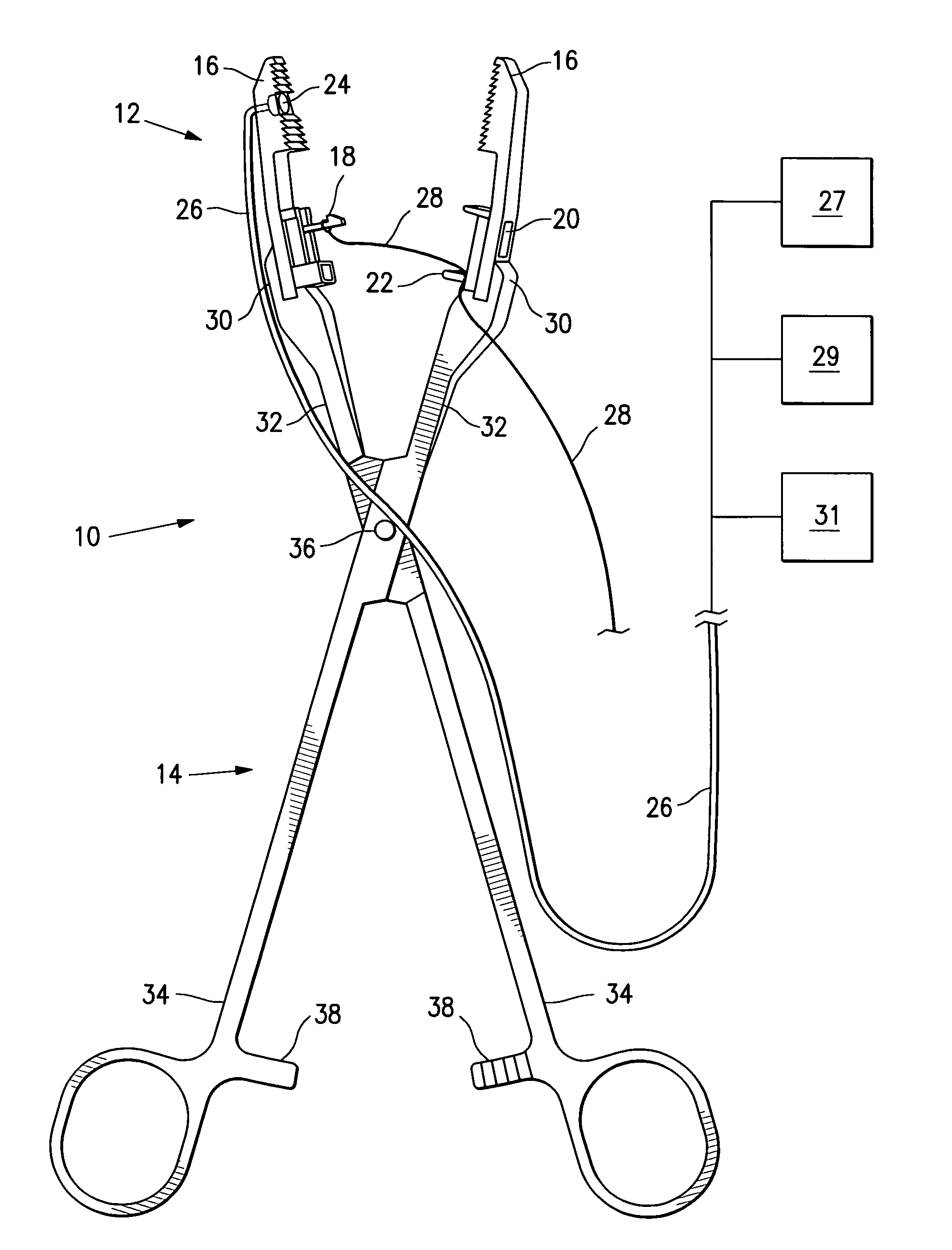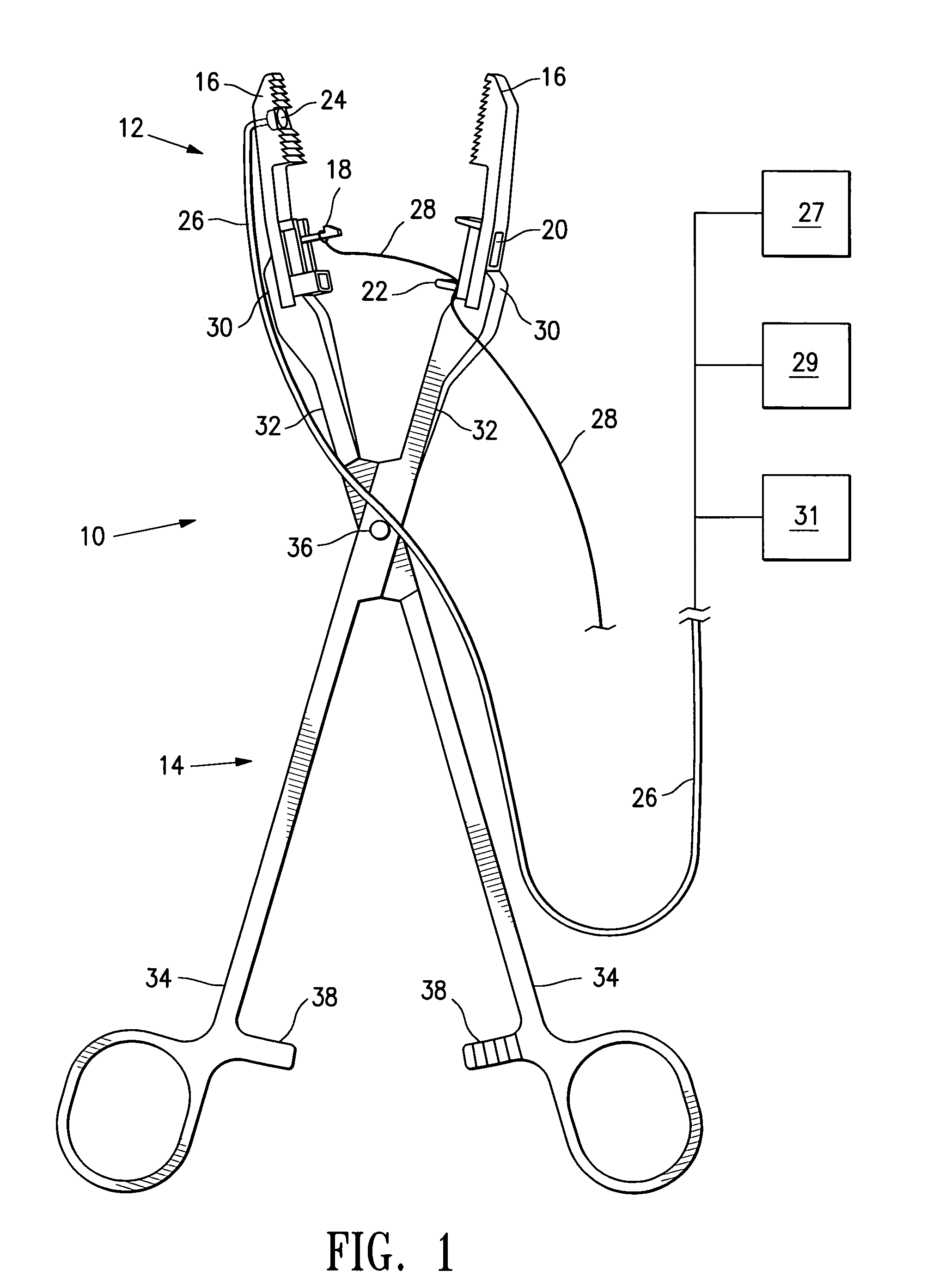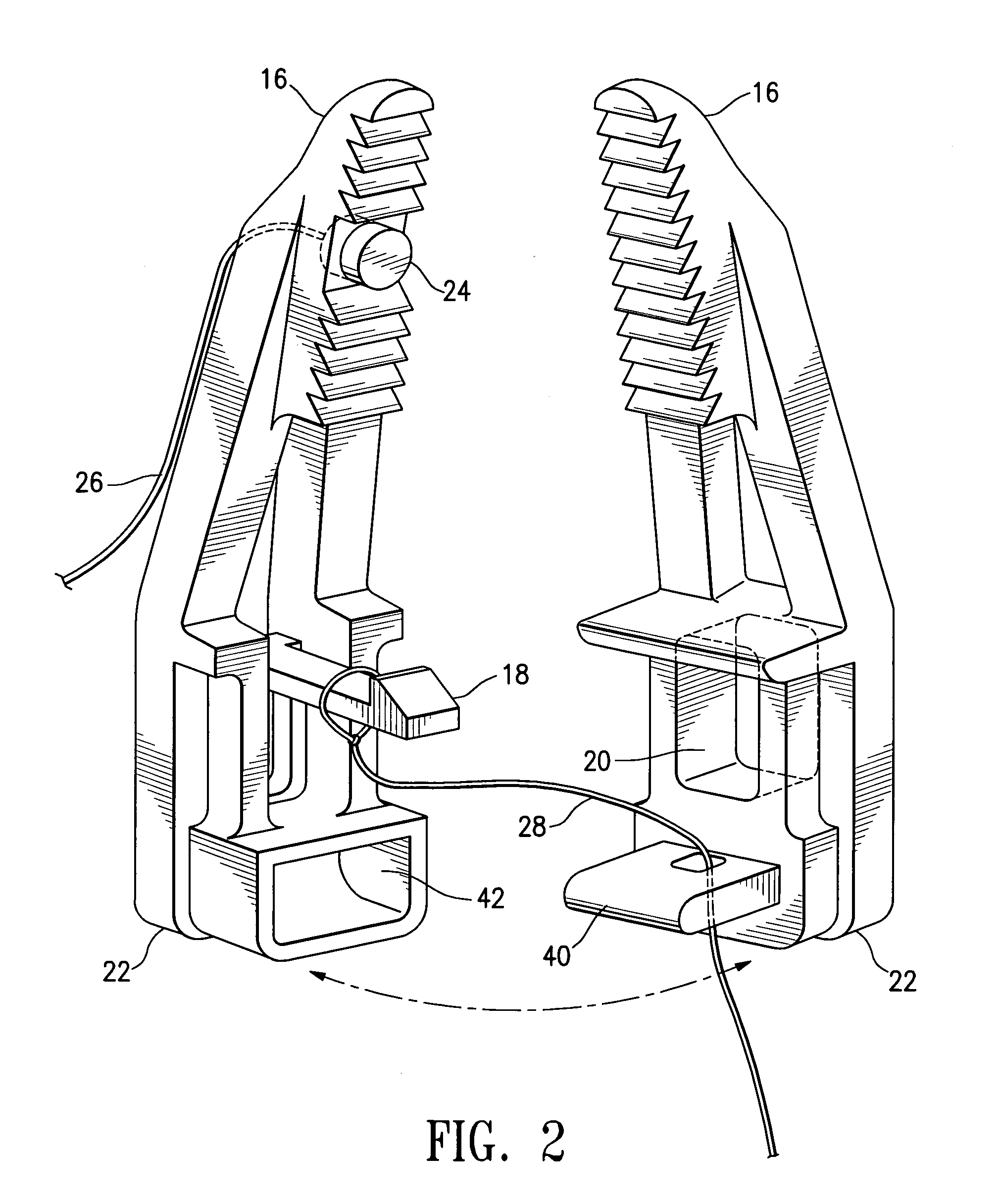Method and apparatus for the detection and ligation of uterine arteries
a uterine artery and ligation technology, applied in the field of diseases and conditions, can solve the problems of 0.5 deaths, uterine fibroid disorders, and many women suffering from painful dysfunctional uterine bleeding or endometritis, and achieve the effects of reducing mortality, and reducing the risk of uterine fibroid disorders
- Summary
- Abstract
- Description
- Claims
- Application Information
AI Technical Summary
Benefits of technology
Problems solved by technology
Method used
Image
Examples
Embodiment Construction
[0040]FIG. 1 shows a system 10 embodying features of the invention including a clamping device 12 and a clamping device applicator 14 embodying features of the invention. The clamping device shown in FIG. 1 is a clamp 12 having clamp jaws 16 which act as clamping members. The clamp jaws 16 are shown separated, but may be locked together by action of the clamp device applicator 14 bringing together locking mechanism components detent 18 and catch 20 effective to lock jaws 16 together. Placement of jaws 16 against tissue, such as vaginal wall tissue, surrounding an artery, such as a uterine artery, is effective to compress an artery between jaws 16 and to clamp and lock together jaws 16 to maintain such compression for a desired length of time. Clamp 12 also has a mounting portion 22 configured to engage a clamp device applicator.
[0041]FIG. 1 further illustrates blood flow sensor 24 located on a jaw 16 where it may sense blood flow in an artery within tissue near a clamp 12. Blood flo...
PUM
 Login to View More
Login to View More Abstract
Description
Claims
Application Information
 Login to View More
Login to View More - R&D
- Intellectual Property
- Life Sciences
- Materials
- Tech Scout
- Unparalleled Data Quality
- Higher Quality Content
- 60% Fewer Hallucinations
Browse by: Latest US Patents, China's latest patents, Technical Efficacy Thesaurus, Application Domain, Technology Topic, Popular Technical Reports.
© 2025 PatSnap. All rights reserved.Legal|Privacy policy|Modern Slavery Act Transparency Statement|Sitemap|About US| Contact US: help@patsnap.com



